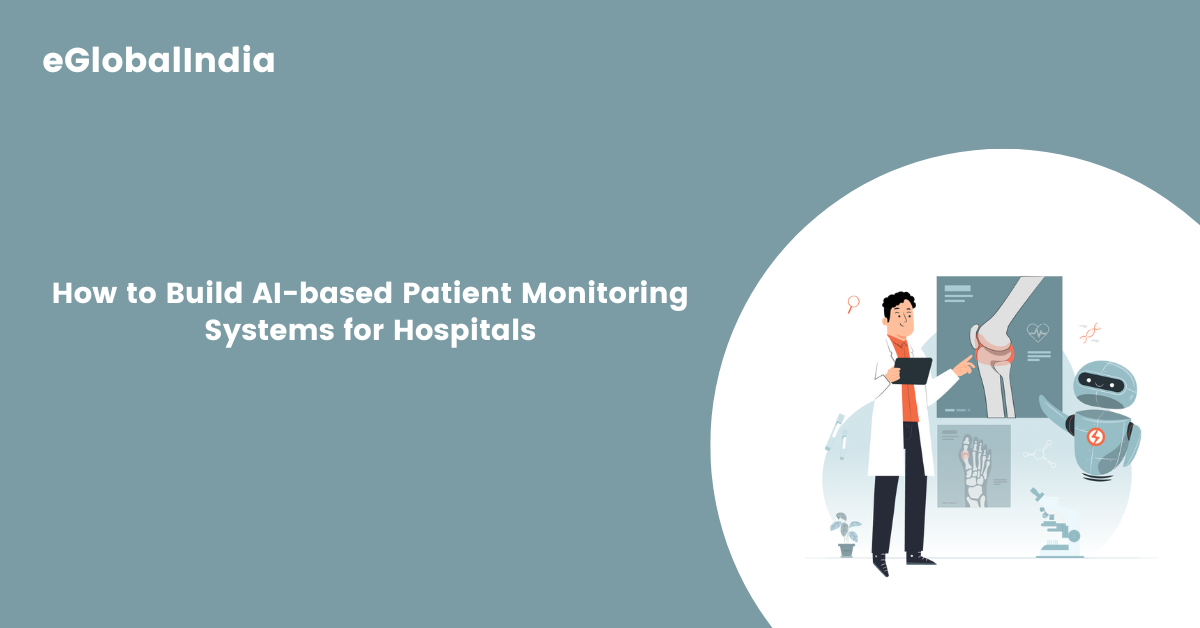

AI-based patient monitoring systems utilize advanced algorithms and machine learning techniques to continuously analyze patient data. These systems process information from various sources, including wearable devices, electronic health records (EHRs), and bedside monitors, to provide real-time insights into a patient’s health status. By identifying patterns and anomalies, AI enables early intervention, potentially preventing complications and reducing hospital readmissions.
Begin by identifying the specific goals of the AI-based monitoring system. Determine the patient population it will serve, the health parameters to monitor, and the desired outcomes. Engage stakeholders, including clinicians, IT professionals, and patients, to gather comprehensive requirements.
Collect data from various sources such as wearable devices, EHRs, and medical imaging. Ensure the information is reliable, thorough, and uniformly structured. Integrate these diverse data streams into a centralized system to provide a holistic view of the patient’s health.
Clean and preprocess the collected data to handle missing values, remove duplicates, and normalize formats. This step is crucial for ensuring the quality and reliability of the data used to train AI models.
Select appropriate AI algorithms based on the monitoring objectives. Common techniques include machine learning models like decision trees, support vector machines, and neural networks. Train these models using historical patient data to recognize patterns and predict health outcomes.
Evaluate the performance of the AI models using validation datasets. Assess metrics such as accuracy, sensitivity, specificity, and predictive value. Conduct pilot testing in a controlled environment to ensure the models perform effectively in real-world scenarios.
Deploy the AI models into the hospital’s IT infrastructure. Ensure smooth alignment with existing tools like EHRs and clinical support systems. Provide training to healthcare staff on how to interpret and act on AI-generated insights.
Continuously monitor the system’s performance and update the AI models as new data becomes available. Implement feedback loops to refine the system and address any issues that arise during clinical use.
AI technology significantly enhances medication adherence by delivering tailored guidance, timely reminders, and intelligent insights to patients. Leveraging remote patient monitoring (RPM), AI continuously tracks patient habits and treatment responses, uncovers adherence trends, and proactively forecasts risks of missed or inconsistent medication intake.
The Intensive Care Unit (ICU) is a critical environment within hospitals where patients facing life-threatening conditions receive specialized, round-the-clock care. Accurate and continuous monitoring is essential for evaluating the severity of a patient’s condition and ensuring timely, high-quality interventions. However, the current monitoring capabilities are often constrained by the demanding workload and time limitations faced by medical staff. Integrating AI-powered technologies can significantly enhance the visual observation and clinical assessment of patients, leveraging advanced learning algorithms to detect subtle changes and support faster, data-driven decision-making.
Hospitals worldwide are adopting advanced technology to meet the demands of aging populations and tight budgets. The “smart hospital” market, incorporating AI, IoT, and robotics, is projected to grow significantly in the coming years. Smart hospitals utilize technology to improve patient care and operational efficiency, such as allowing patients to control their environment via smartphones and employing AI to predict sepsis risks.
The integration of AI in patient monitoring is an evolving field with ongoing research and development. Future innovations may include the use of ambient intelligent sensors for continuous monitoring, AI-assisted virtual rounding to reduce physical visits, and the development of AI models capable of predicting a wider range of health conditions. Additionally, advancements in interoperability standards will facilitate more seamless integration of AI systems across different healthcare platforms.
An AI-based patient monitoring system uses artificial intelligence algorithms to continuously track a patient’s health parameters (like heart rate, oxygen levels, blood pressure, etc.) and analyze this data to detect anomalies, predict health issues, and assist medical staff in decision-making. These systems combine data from EHRs, wearables, and medical devices to offer real-time insights.
Traditional systems rely heavily on predefined rules and thresholds. AI-based systems, however, use machine learning and pattern recognition to learn from historical data, adapt to new patterns, and make predictive analyses. This allows for early detection of problems before they become critical.
While AI offers valuable insights, it is intended to assist—not replace—medical professionals. The safety of AI in patient care is ensured through rigorous testing, validation, and continuous monitoring. When used correctly, AI can enhance the quality and safety of care, but final decisions should always be made by trained clinicians.
Yes, one of the most impactful features of AI in healthcare is Remote Patient Monitoring (RPM). AI-powered platforms can analyze data from home-based wearables and alert healthcare providers in case of anomalies, reducing unnecessary hospital visits and improving chronic disease management.
These systems use :
Building AI-based patient monitoring systems in hospitals holds immense potential to transform healthcare delivery. By following a structured development process and addressing key challenges, healthcare organizations can implement effective AI monitoring solutions that enhance patient safety, improve outcomes, and optimize hospital workflows. As technology advances, AI will continue to play a pivotal role in shaping the future of healthcare.
Build your AI patient monitoring system — contact us today.

© 2017 All rights reserved.